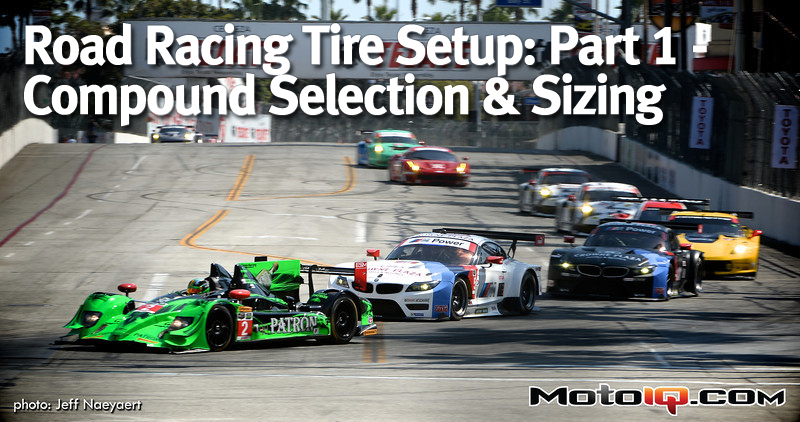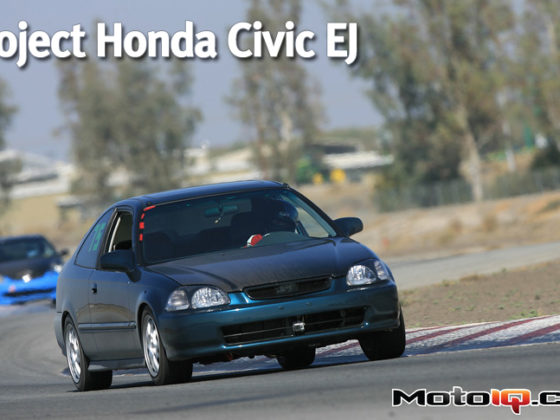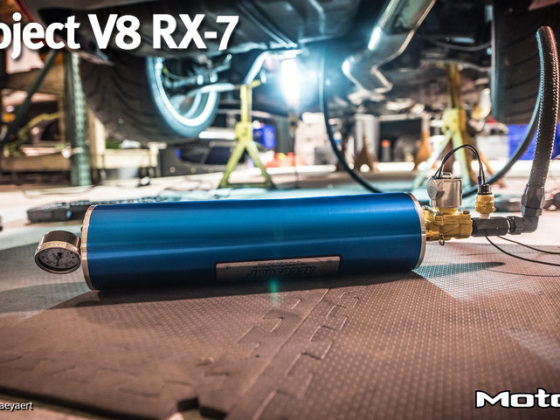,
A time-attack racer is going to want to run the stickiest tire he can find, and something like Hankook’s Z214 C91 is the hot ticket. Since sessions are only about turning out the single fastest lap with decent spacing between cars, wear and forgiveness is only concerning when one notices the permanent smell of rubber in their UPS driver’s truck and an equal amount of wear on the credit card’s magnetic stripe.
 Hankook’s Z214 in the C91 compound is a fast tire, but with its more autocross-centric compound, does not appreciate a lot of heat and abuse, and a bad lock up could result in cording.
Hankook’s Z214 in the C91 compound is a fast tire, but with its more autocross-centric compound, does not appreciate a lot of heat and abuse, and a bad lock up could result in cording.Idiots Racing gentlemen (and sometimes ladies) who run in series like the MPTCC are going to want a compromise between both: fast lap times, balanced by longer wear and more forgiving nature as found in the Toyo Proxes RR. In sprint racing (sessions less than an hour), wear and abuse forgiveness is just as important as outright lap times. If you run a second a lap quicker than the field, but your tires are chunking and feel like marshmallows halfway through the race, you’re probably not going to be hoisting any gold colored plastic after the race. Forgiveness is also important because wheel to wheel racing is chaotic, and your tires are going to have to absorb a messiah-like amount of sin throughout the course of a race. There are other classes with slower/faster cars, “creative” lines to take to protect position or pass, and varying levels of driver skill and predictability. Should the on-track events conspire against you, you’ll want the tire to withstand a lockup or spin without flat-spotting through to the cord.
 Toyo’s RRs are quick and strong like bull.
Toyo’s RRs are quick and strong like bull.Another factor to consider is where you race. I race primarily in Southern California, and have only been subjected to two races with any amount of water on the ground in 15 years of track time. However, since race tracks aren’t exactly profitable uses of land, all of our tracks are in the worthless parts of the region: desert. This means I’m going to need a tire that is optimized for dry conditions with very high track temps. Conversely, someone who races in the Pacific Northwest is going to need a tire than can handle some condensation, and the ability to withstand 140* track temps is of little concern.
 Willow Springs International Raceway, located in beautiful downtown Rosamond, has little need for Round Up. We’re fairly certain that agricultural activity here is fairly good practice for Mars colonization.
Willow Springs International Raceway, located in beautiful downtown Rosamond, has little need for Round Up. We’re fairly certain that agricultural activity here is fairly good practice for Mars colonization.An often overlooked factor in tire and compound selection is the actual surface of the track you race on. Anyone who’s been paying attention to Formula One notices that the compounds available to the race teams will vary from week to week. Some tracks have soft and super soft, others medium and soft, and so on. This is because rough track surfaces abuse the spit out of tires, while smooth surfaces are like a gentle caress. Since F1 wants teams to perform at least one pit stop so we can all marvel at the tire-change dance, they select compounds that will wear out at least once during the race. So, if you race on scorched surfaces occasionally paved by people with hoarse voices and missing front teeth, you’re probably going to want a longer-wearing compound than someone who runs on pristine country-club tracks scrubbed by a Zamboni. This is doubly true for tracks that feature plenty of long sweepers and shorter straights.
 Cars running at the Long Beach Grand Prix, with tight turns, California street pavement and unforgiving track borders are going to want to run a more forgiving tire than if they were at a regular track.
Cars running at the Long Beach Grand Prix, with tight turns, California street pavement and unforgiving track borders are going to want to run a more forgiving tire than if they were at a regular track.


